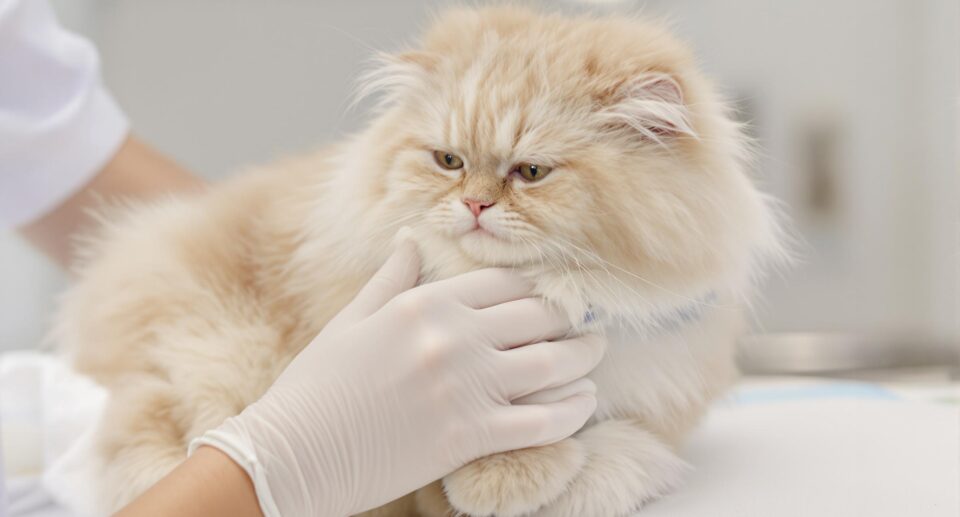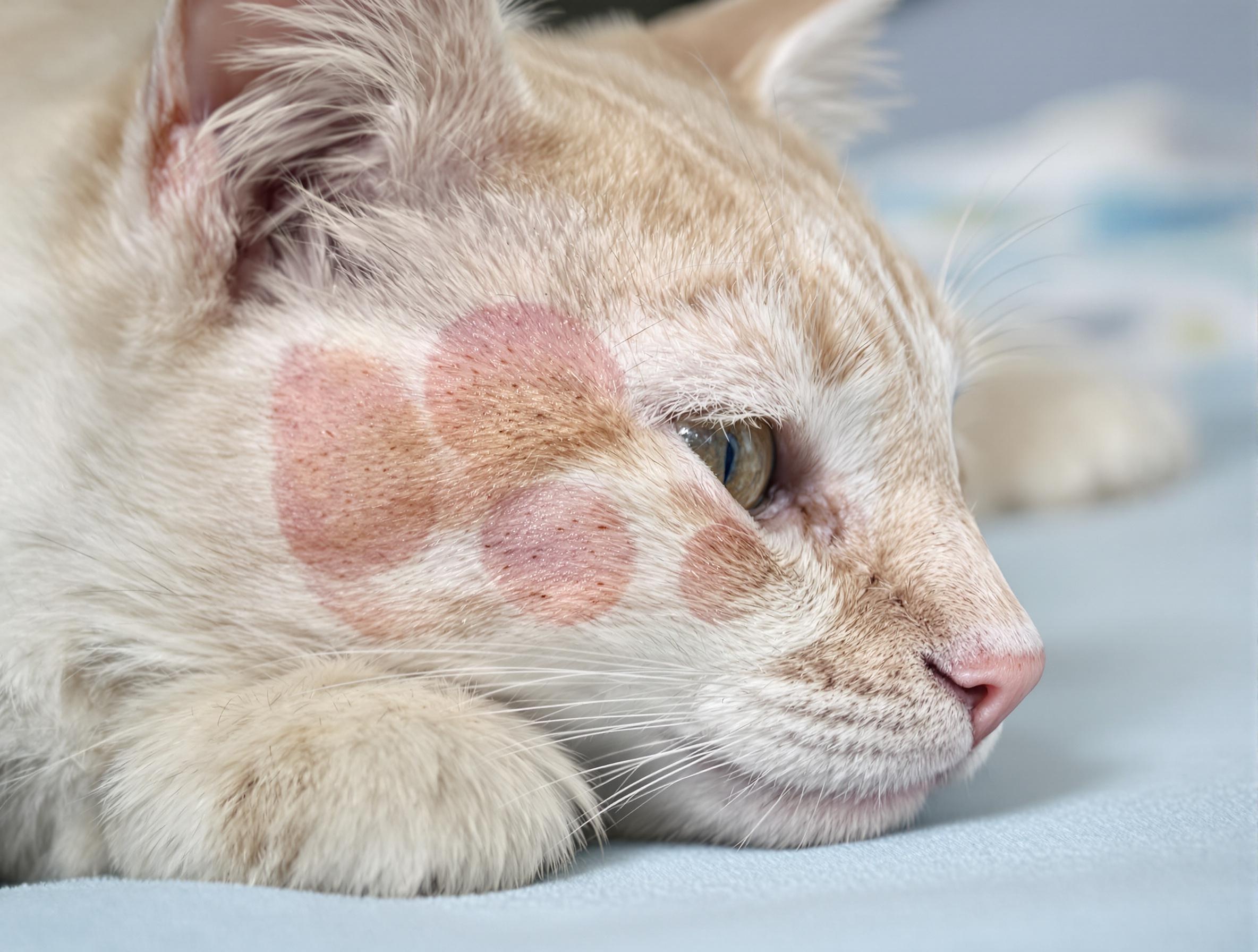Cat-Scratch Disease Symptoms: How to Identify Them

Key Takeaways:
- Red bumps or swollen lymph nodes near a scratch can signal cat-scratch disease in humans. Symptoms may appear slowly and sometimes require antibiotics.
- Cats may not show signs, but symptoms like swollen glands or hiding behavior in kittens may need a vet’s attention.
- Prevent infection with flea control, clean wounds, and routine vet visits.
What Is Cat-Scratch Disease?
Your cat may just be playing, but one quick scratch could introduce bacteria that can cause cat-scratch disease. This infection spreads between cats and can affect people too, especially kids and those with weaker immune systems. Thankfully, most cases are mild when caught early.
If you’re unsure what to look for or how to respond, PetHealthMD offers trustworthy guidance on recognizing symptoms and staying ahead of potential problems.
Being proactive, like using flea prevention and watching for symptoms, can help you care for your entire household, including the family cat.
How Cat-Scratch Disease Spreads
Cat-scratch disease is caused by Bartonella henselae, a bacteria carried in a cat’s blood. It spreads from cat to cat through fleas, and from cats to people through scratches or bites, especially if saliva comes into contact with broken skin.
Kittens, outdoor cats, and strays are more likely to carry the bacteria. Fleas are the main cause, so year-round flea prevention is the best protection. Even healthy-looking cats can carry the bacteria without symptoms.
How to Protect Your Household
- Use vet-approved flea products. PetHealthMD’s flea guide covers options recommended by veterinarians.
- Check your cat regularly for fleas, especially if they go outside.
- Keep your cat’s nails trimmed and discourage rough play.
If you’re managing multiple cats or fostering kittens, ask your vet about tailored flea strategies. Shop flea prevention products from PetMeds to help you stay on top of protection.
Early Cat-Scratch Disease Symptoms in Cats
Many cats infected with Bartonella never show symptoms, but others, especially kittens or immune-compromised pets, may act differently or show mild physical signs.
Physical Signs to Look For
- Lumps under the skin (swollen lymph nodes), often around the neck, jaw, or legs
- A mild fever that may not be obvious without a thermometer
- Changes in coat appearance or grooming behavior
- Loss of appetite or skipping meals
Behavior Changes to Monitor
- Less interest in play or hiding more often
- Sensitivity when touched, especially around the neck or legs
- Sudden irritability or withdrawal
These signs aren’t always linked to cat-scratch disease, but they are signals your cat may be uncomfortable or ill. A quick vet visit can help determine what’s going on and recommend safe next steps.
Cat-Scratch Disease Symptoms in Humans
People usually show signs of cat-scratch disease within 3 to 14 days after a scratch or bite. The first clue is often a small red bump or blister, followed by swollen lymph nodes.
Common Signs to Watch For
- A raised red area at the scratch or bite site
- Tender, swollen lymph nodes near the area (neck, underarm, or groin)
- Fever, tiredness, poor appetite, or mild headache
- Less commonly: joint pain, muscle soreness, or a rash
Most healthy adults recover without treatment, but children and those with medical conditions may need extra care. If symptoms last more than a few weeks or get worse, see a doctor.
In more serious cases, like infection spreading to bones or the liver, hospital care may be needed. Around 500 people a year are hospitalized due to complications.

How to Prevent Cat-Scratch Disease
Because fleas are the primary source of Bartonella, flea control is the most effective way to prevent cat-scratch disease. Combine this with clean handling habits and wound care to lower your risk even further.
Steps to Help Protect Your Family
- Clean scratches and bites right away with warm water and soap. Use antiseptic and cover with a clean bandage.
- Apply flea treatment regularly. Explore some easy-to-use flea treatments.
- Keep your cat’s nails trimmed, or ask your vet for help.
- Visit your vet for regular checkups, even for indoor cats.
- Teach kids to avoid rough play and always wash their hands after handling pets.
- Keep an eye out for fleas, especially if you’ve had them in your home before.
Frequently Asked Questions (FAQs) About Cat-Scratch Disease Symptoms
What Are the First Signs of Cat-Scratch Disease?
In people, a bump or blister appears where the scratch happened, followed by swollen lymph nodes near that area. In cats, the signs are more subtle. Watch for swollen glands, changes in eating, or hiding.
Can Cats Spread the Disease to Each Other?
Yes. Fleas carry the bacteria between cats, so homes with multiple pets are at higher risk. Flea prevention and regular vet care are especially important in multi-cat households.
Do I Need Antibiotics?
Most people recover without medication, but your doctor may prescribe antibiotics if you have ongoing symptoms or a condition that affects your immune system. Cats usually don’t need treatment, but they should still be seen by a vet.
When Should I Call a Vet or Doctor?
Call your vet if your cat stops eating, seems withdrawn, or has swollen areas that don’t go away. Contact a doctor if you feel sick or notice swelling in your lymph nodes after a scratch or bite.
How Long After a Scratch Do Symptoms Show Up?
Symptoms in humans can begin within 3–14 days after a scratch or bite. Swollen lymph nodes may take up to two weeks to appear.
Is Cat-Scratch Disease Dangerous?
Most cases are mild, but in rare situations, complications can occur. People with health issues should talk to their doctor after any cat scratches or bites.
How to Keep Your Pet and Family Safe
Cat-scratch disease doesn’t have to be a concern when you stay informed and take simple precautions. Keep your cat protected with regular flea treatment, clean any scratches quickly, and pay attention to changes in behavior or appetite. These habits go a long way in protecting your household.
If your cat seems sick or a family member develops symptoms after a scratch, don’t guess—reach out to your veterinarian or doctor. They’re your best resource for keeping everyone healthy.
Learn more about symptoms, prevention, and vet-approved care at PetHealthMD and 1800PetMeds Flea & Tick Treatments. These expert-backed tools can help you care confidently for the pets and people you love.





